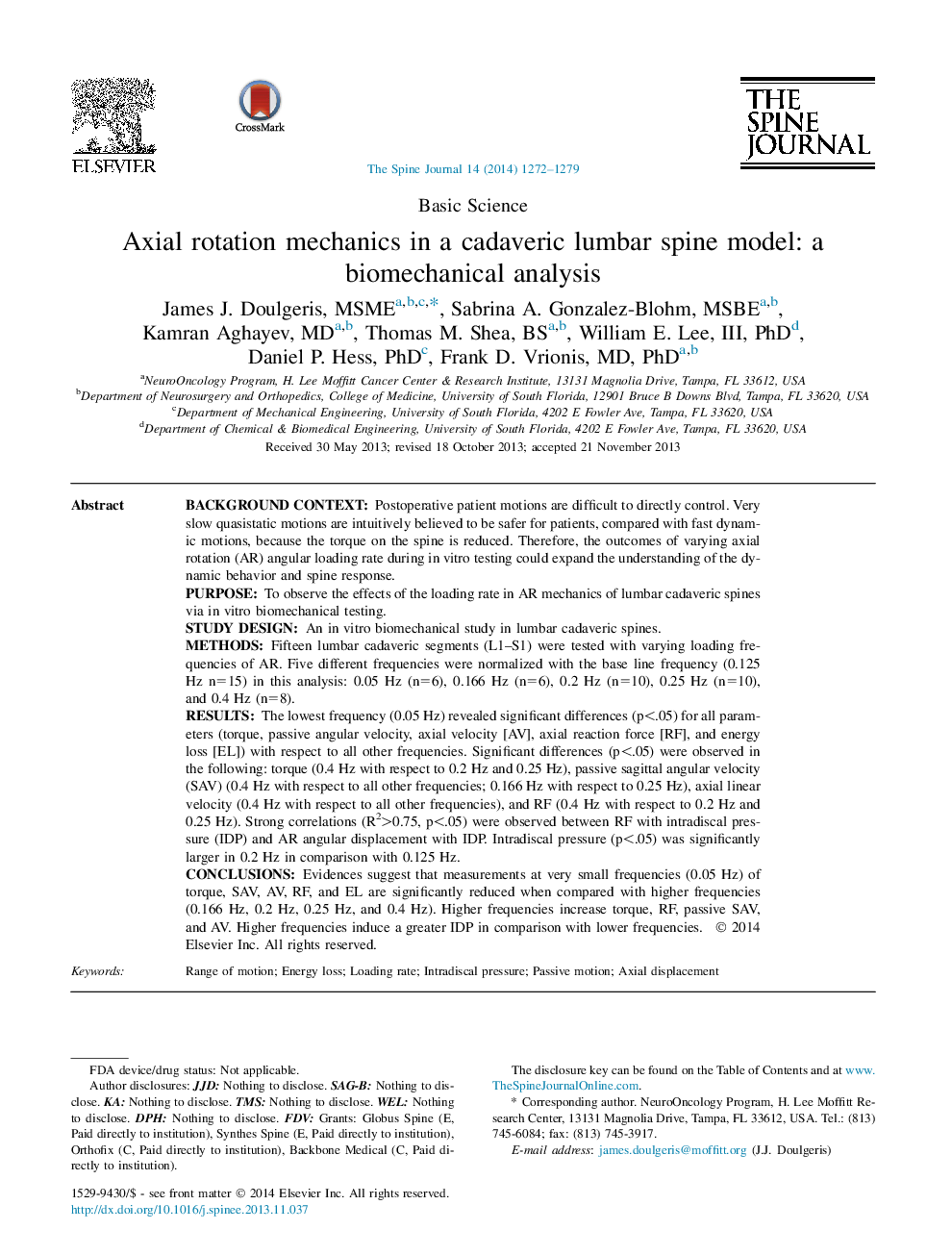| کد مقاله | کد نشریه | سال انتشار | مقاله انگلیسی | نسخه تمام متن |
|---|---|---|---|---|
| 6212384 | 1268577 | 2014 | 8 صفحه PDF | دانلود رایگان |
Background contextPostoperative patient motions are difficult to directly control. Very slow quasistatic motions are intuitively believed to be safer for patients, compared with fast dynamic motions, because the torque on the spine is reduced. Therefore, the outcomes of varying axial rotation (AR) angular loading rate during in vitro testing could expand the understanding of the dynamic behavior and spine response.PurposeTo observe the effects of the loading rate in AR mechanics of lumbar cadaveric spines via in vitro biomechanical testing.Study designAn in vitro biomechanical study in lumbar cadaveric spines.MethodsFifteen lumbar cadaveric segments (L1-S1) were tested with varying loading frequencies of AR. Five different frequencies were normalized with the base line frequency (0.125 Hz n=15) in this analysis: 0.05 Hz (n=6), 0.166 Hz (n=6), 0.2 Hz (n=10), 0.25 Hz (n=10), and 0.4 Hz (n=8).ResultsThe lowest frequency (0.05 Hz) revealed significant differences (p<.05) for all parameters (torque, passive angular velocity, axial velocity [AV], axial reaction force [RF], and energy loss [EL]) with respect to all other frequencies. Significant differences (p<.05) were observed in the following: torque (0.4 Hz with respect to 0.2 Hz and 0.25 Hz), passive sagittal angular velocity (SAV) (0.4 Hz with respect to all other frequencies; 0.166 Hz with respect to 0.25 Hz), axial linear velocity (0.4 Hz with respect to all other frequencies), and RF (0.4 Hz with respect to 0.2 Hz and 0.25 Hz). Strong correlations (R2>0.75, p<.05) were observed between RF with intradiscal pressure (IDP) and AR angular displacement with IDP. Intradiscal pressure (p<.05) was significantly larger in 0.2 Hz in comparison with 0.125 Hz.ConclusionsEvidences suggest that measurements at very small frequencies (0.05 Hz) of torque, SAV, AV, RF, and EL are significantly reduced when compared with higher frequencies (0.166 Hz, 0.2 Hz, 0.25 Hz, and 0.4 Hz). Higher frequencies increase torque, RF, passive SAV, and AV. Higher frequencies induce a greater IDP in comparison with lower frequencies.
Journal: The Spine Journal - Volume 14, Issue 7, 1 July 2014, Pages 1272-1279
